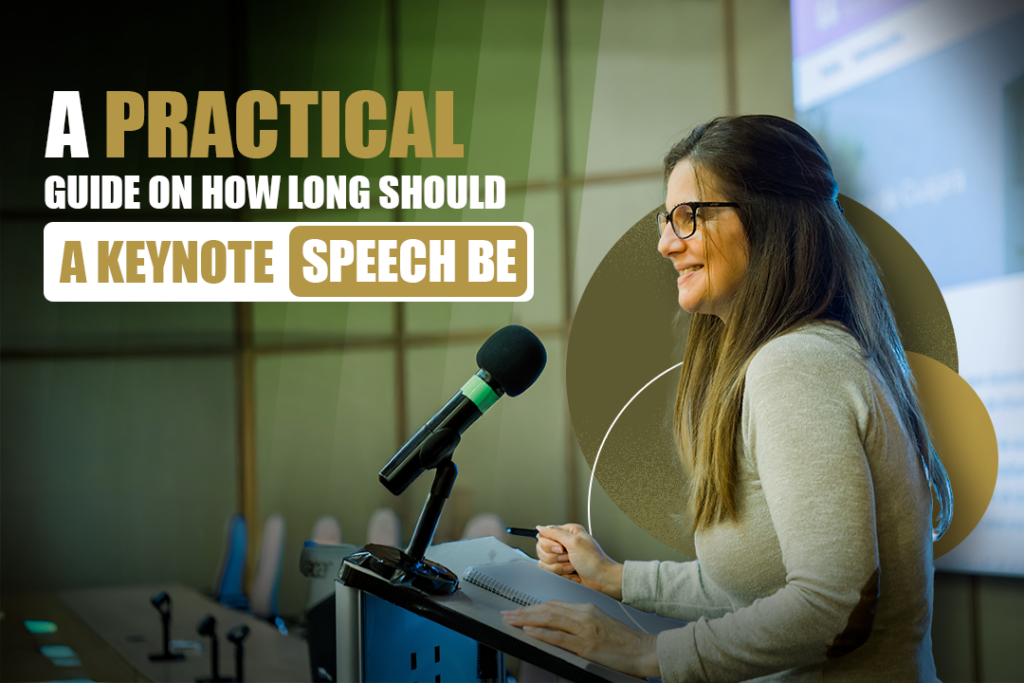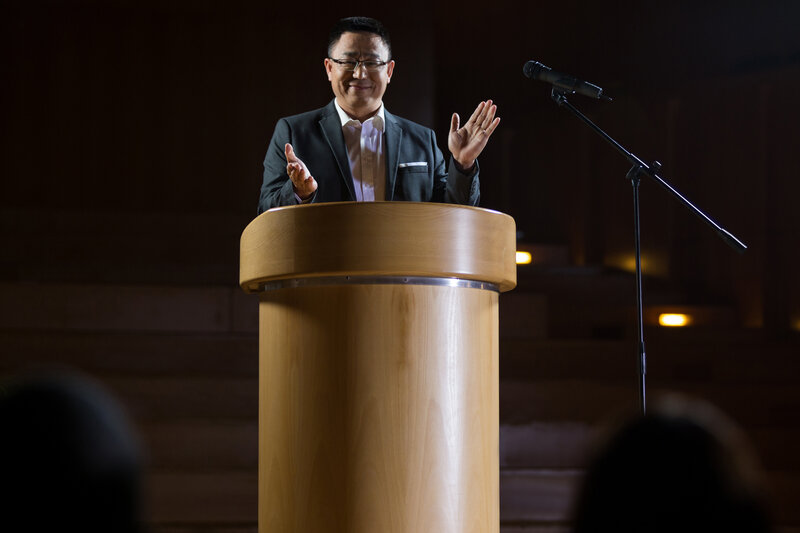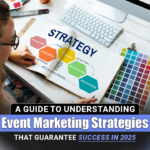
An excellent public speech has the power to change people’s lives permanently. The task is to deliver it in a way that hits the right chord with the audience. However, “How long should a keynote speech be?” is a constant conundrum among public speakers. Keynote speeches cannot be too short or too long. They need to convey the essence of the chosen theme in an easy-to-understand manner.
Event organizers choose professional speakers for the keynote address. These people are usually well-known in the event and public speaking industry. Their power-packed oratory skills can stir the right emotions in the audience for a successful event opening.
While keynote speakers are usually experienced in their areas of expertise, it is crucial for those of you who have been newly invited to speak that you understand how to craft your speech. One key concern for most speakers is how long a keynote speech should be.
To arrive at a definitive answer, it is essential to understand the structure of a keynote speech. In this article, let’s explore everything you need to know about a keynote speech, from its basic structure to the total duration taken to prepare for it, how long a keynote speech should be, insightful tips for delivering it effectively, and more.
What Is A Keynote Speech?
A keynote speech stands above all conferences and is the event’s highlight. Most event organizers make their keynote speakers and speeches the focal point of the event, aligning with the theme and the primal objective.
For multi-day events, the keynote speech is usually reserved for the event’s last day. This leads to a build-up of excitement and anticipation for the keynote speeches. However, some event organizers might schedule the keynote speech at the very beginning of the event to set a tone for the rest and let everyone know the event’s objective and what audiences can expect.
A keynote speaker is usually given a substantial amount of time to deliver their keynote speech, around 45 to 60 minutes or more, over dinner. Compared to other presentations, keynote speeches allow for deeper delving into the event’s objective and goals and lay down the event’s broader agenda. All of these take time and demand a unique atmosphere focused on the keynote speech.

How To Structure An Impactful Keynote Speech?
A successful keynote speech has a well-defined framework designed to make it compelling for the audience. The primary intent of a keynote speech is to introduce the event’s central theme to the attendees and motivate them for the programs and workshops scheduled for them.
Every keynote speech is structured differently based on the speaker’s style. However, a few essential elements are the same for all keynote speeches. Let’s explore them below to understand how a keynote speech should be structured.
1. Opening Hook
Have you been to events where you doze off in the first ten minutes of a presentation? We’ve all had such experiences. To avoid that, it is essential to kick-start your keynote speech with a bang! You can start with a personal story that connects to the event’s central theme.
For instance, if the topic is “Encouraging Women Entrepreneurs,” you can share a personal story of how you started your journey as an entrepreneur or cite an inspiring example for the audience. You could also use humor to start light and gradually shift to a more serious tone, talking about how companies and governments can support the mushrooming of women entrepreneurs.
You could also start with a rhetorical question to instantly grab the audience’s attention. The idea is to hook the audience’s attention within the first five minutes of your speech.
2. Introduction to the Main Story
As mentioned before, every keynote speech has a central theme. Once you have established a rapport with the audience, you must understand the event’s central theme. This is where all your research and industry expertise comes to use. Make the topic interesting by using relevant examples and anecdotes.
A killer keynote speech demands well-researched facts, statistics, current trends, and a future topic forecast. For example, discussing economic development in Africa begins with facts and figures about the current economy, factors working for and against its growth, measures to achieve sustainable growth, and a forecast of what lies ahead based on current growth and geopolitical conditions.
3. Main Content
This is where you have to dive into the main topic. Let’s take, for example, the keynote speech to address Africa’s economic growth and development. Then, you could start by going over the situation in the continent over the past five years and then move on to the current scenario. You can give examples and state relevant data to substantiate economic growth and development details and address the need to deal with challenges.
Further, you can touch upon the goals for the future and the course of action to achieve them. This was just an example of how to deliver a keynote address. You can always merge your style and have a unique way of presenting.

4. Visual Aids
Humans are visual creatures irrespective of one’s actual visual abilities. It’s easier for us to retain information when shared in pictures. So, bank on this aspect and use infographics, relevant images, data sheets, and other visual reference materials during your presentation.
This will get your audience to pay more attention to your speech and give them a sensory break from continuously looking at you. These small things go a long way in ensuring maximum audience engagement at a B2B event. Also, if you’re not entirely confident of your subject matter and wondering how long a keynote speech should take, it’s wise to use all kinds of visual aids to support your presentation.
5. End Note
Concluding a speech has to be done powerfully to create maximum impact. A good ending has two parts: first, you will summarize all the points discussed in the speech, and then you must communicate the call to action. Going back to the previous example, the call to action could be to encourage more people to opt for entrepreneurship or a renewed focus on the service sector to foster economic growth and development in Africa.
Just as you decided on an impactful opening, ensure a powerful closing. People tend to remember the opening and closing of every speech or presentation, and you don’t want to miss out on any opportunity to create a strong impression on your listeners.
What is the Impact of the Keynote Speaker on the Speech?
Before understanding how long a keynote speech should last, you need to know the main factor that controls the duration of the speech. It is the keynote speaker’s ability and skill to deliver a speech that can capture the audience’s attention and retain it for the duration of the speech. Moreover, you, the keynote speaker, should be able to captivate the audience enough to make them interested in the event and its objective, fully commit to it, and leave a lasting impression.
Additionally, an optimum time frame can capture the audience’s attention and keep them engaged for the duration of the speech. As such, there’s a maximum and minimum limit for the duration of the keynote speech. The maximum limit, again, depends on the keynote speaker’s ability to speak for a set amount of time with enough relevancy to keep the audience engaged.
Once you notice a change in the audience’s mood, that’s your cue that you’ve lost the audience’s attention and reached the maximum limit of your speech. The minimum length of time for the keynote speech is the time needed to create an impactful and lasting message for your audience. You will know if the speech didn’t meet the minimum duration when the audience is confused or expects more from you.
Simply put, the keynote speech’s maximum length should ideally be 45-60 minutes, and the minimum length should be at least 20 minutes.

How Long Should a Keynote Speech Be?
Now that you know what a keynote speech is, its importance, and its basic structure, you would want to know precisely how long it should be. The answer is it depends. It depends on the amount of speaking time allocated by event planners.
Most importantly, as highlighted in the previous point, the keynote speech’s length ultimately depends on the speaker. The speaker’s ability to hold the audience’s attention, the amount of relevant content they can cover, and the time needed to leave an impactful message all contribute to the length of the keynote speech. The length of the keynote speech depends on the keynote speaker’s ability to deliver a speech that inspires the event attendees.
As such, for practical purposes, a keynote speech should be around 30-60 minutes long, with the ideal time being 45 minutes, considering all the factors are favorable.
What Are The Tips To Writing A Keynote Speech?
You have understood what a keynote speech is, how it is structured, and the impact of keynote speakers on the keynote speech’s length. Now, let’s know how you can write a keynote speech that captivates your audience and is worthy of the ‘keynote’ title.
1. Understanding Your Audience
Understanding your audience can help you write a keynote speech that captivates and keeps them engaged. This means you have to read the room and know the audience demographics, their interests, etc. All of these can be known by the type of event you’re speaking about. For example, if you’re writing a keynote speech for an HR conference, you should prepare a speech catering to HR professionals, business leaders, managers, etc. This will enable you to personalize your keynote speech for your audience, making the overall message more relevant and impactful.
2. Organizing Your Thoughts
You might want to say many things in your keynote speech to make it more inclusive and all-encompassing. However, the best tip to write and deliver a compelling keynote speech is to know which points are replaceable and which points are not.
Collecting your thoughts means organizing your ideas and talking points only to include those necessary and relevant to your audiences and the overall spirit of the event. You can include relevant real-life experiences as examples, engaging demonstrations, personal anecdotes, etc., but you also need to know which of them help you convey your keynote message. Having an understanding of that will help you write a compelling keynote speech.

3. Developing a Throughline
A throughline is a central theme or narrative thread that runs consistently throughout your keynote speech. It acts as a connection point between various elements and anecdotes, providing coherence and helping you deliver a core message by reinforcing a central theme in your speech. This method makes your keynote speech more impactful and memorable to your audience.
4. Brainstorming with an open mind
Brainstorming ideas allows you to explore diverse perspectives and angles that previously went unnoticed. It enables you to create unique themes and subtopic ideas that make your speech enjoyable and contentful.
You can schedule a time to be alone for a few hours with a blank notebook or a whiteboard to jot down your thoughts and ideas. Minimize distractions to prevent disrupting your chain of thoughts; however, take breaks in between to get more insightful ideas.
5. Grouping Ideas into Themes and Chapters
Now that you’ve established your throughline and jotted down your ideas, it’s time to organize those thoughts into a coherent keynote speech. This means you must create sections and chapters for each talking point or idea in your speech. You can’t expect the audience to follow through a monotone speech without an end or beginning. Likewise, to avoid a big block of text in your speech, you must create different chapters focusing on particular talking points or themes. Ensure all those chapters have a definitive beginning and end to make your speech more content.
6. Using Real-Life Examples or Experiences
To make your keynote speech more relatable to your audience, use your real-life examples and experiences. This will make your speech more genuine and natural, giving your audience interesting insights about your life. Keynote speakers are typically highly accomplished individuals in their fields, this means, that event organizers, would want you to share your valuable life experiences with the audience who might gain a unique understanding or perspective from your keynote speech.

7. Creating a Fripp Speech Model
Patricia Fripp, an accomplished keynote speaker, presentation skills trainer, and executive speech coach, has developed a speech model to help keynote speakers structure their speeches. Below is a representation of her speech model
According to Fripp, it is essential to have a power-packed opening, proceed to the main content, and eventually end on a high note so that the audience will remember your presentation for the coming days. Her speech model can be used for any kind of presentation, such as a marketing pitch, a guest speech, the opening for a debate, and so on.
8. Drafting and Editing your Keynote Speech
How to Make a Compelling Keynote Speech?
If you are practicing to deliver a keynote speech, here are a few insightful tips to help you prepare.
1. Focus on Storytelling
To deliver a compelling keynote speech, you should focus on storytelling as a method that resonates with your audience at an emotional level. Your keynote speech is supposed to be the main attraction of the event, as such you need to craft a memorable and engaging speech.
Designing your keynote speech that adopts storytelling practices is the best way to deliver a compelling speech. You can embed storytelling tactics like building up tension, soft pauses, a proper beginning, and finishing off with a fitting ending. Since humans are social beings, we love a good story, and adopting these practices will make your keynote speech more relatable to the audience and allow you to retain their attention for the duration of your speech.
Pro Tip: Include as many relevant personal experiences as possible to enhance the validity of your keynote speech. It will also make it easier to convert it into a story so the audiences can relate emotionally.

2. Choose Key Talking Points
When preparing a keynote speech, you might get caught up in all the details and forget to have a bird’s eye view of the content you are presenting. To avoid this, get other people involved while drafting your speech. Identify the key focus areas and phrases you want to stress on. Envisage the impact you wish to create on the audience and highlight the necessary points while drafting the speech. Do a mock presentation before the event organizers, gauge their response, and make the required iterations.
Pro Tip: Avoid obsessing over slides or cue cards all the time while on stage. It is better to memorize and build on a few keywords on stage. You can look at the slides but not rely heavily on them, as facing your audience is crucial for connecting with them.
3. Share Your Story
Although events are highly formal, you can choose to add a personal touch to your keynote speech. While addressing your audience, add a relevant personal story or recent encounter. This will build an instant connection with them, and you will have their attention for the main message. Everyone connects with stories and experiences; you should use them to deliver an impactful message.
Pro Tip: You can have a prelude cum introductory announcement of you being the keynote speaker for the event on your social media profiles. This adds value to your digital presence and gives your followers something to look forward to.
4. Practice
No matter how experienced you are, it is always better to review your keynote speech multiple times before finally presenting it on stage. The more familiar you are with your topic, the more confident you will be when addressing the audience. The ease with which you communicate will help you engage your audience.
Imagine a forced, unnatural way of speaking that will fail to create a positive impression on your audience, and that’s the last thing you want. So, practice well before your final speech.
You can practice in front of the mirror to gain more confidence and check your body language. To understand the nuances of body language as a public speaker, check our blog, “10 Ways to Unleash the Power of Effective Body Language in Public Speaking.
You can also read our article, How to Speak at a Conference: 10 Tips to Become a Successful Speaker, to learn about the sure-shot practices for improving public speaking skills.
Pro Tip: Maintain energy levels on stage. Speaking for over half an hour is no joke. Keep yourself hydrated and grab a bite before going on stage. A cup of strong coffee can also go a long way in keeping you fueled for your keynote presentation.

Key Takeaway
It is a privilege to be a keynote speaker. You have the power to direct your audience, who have come to an event with a clean slate. The information you give them and how you give it will be the starting point of their learning journey at the event.
This ability to transform people’s minds is indeed an enriching experience. To keep going as a professional public speaker, you should be well-connected with the event world’s stakeholders.
At Eventible, we have a strong network of public speakers who event organizers constantly contact. Enlist in our Speakers Directory, and event organizers worldwide can contact you.




Comments are closed.